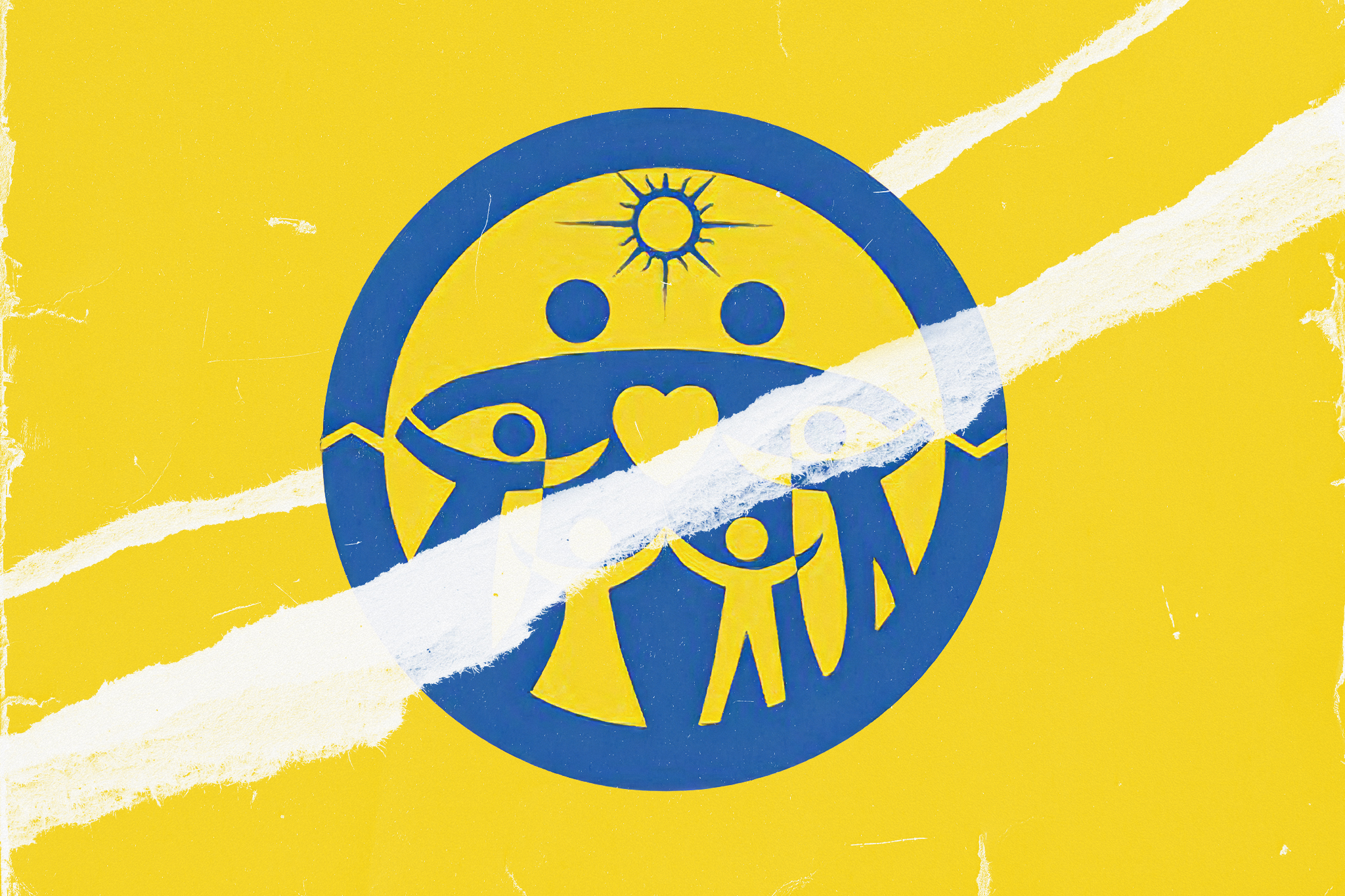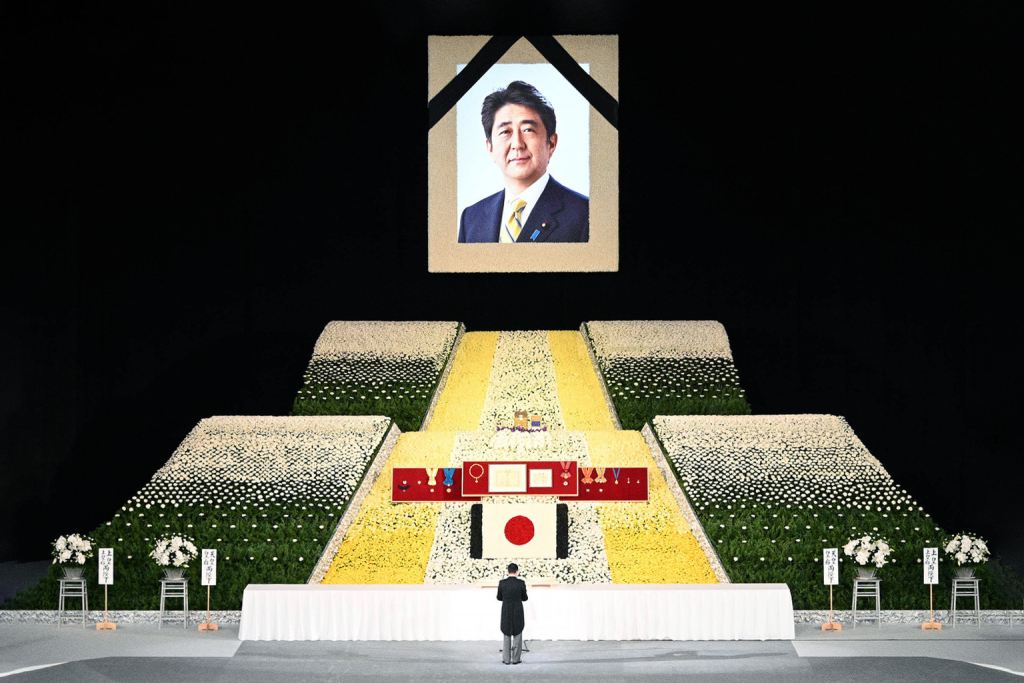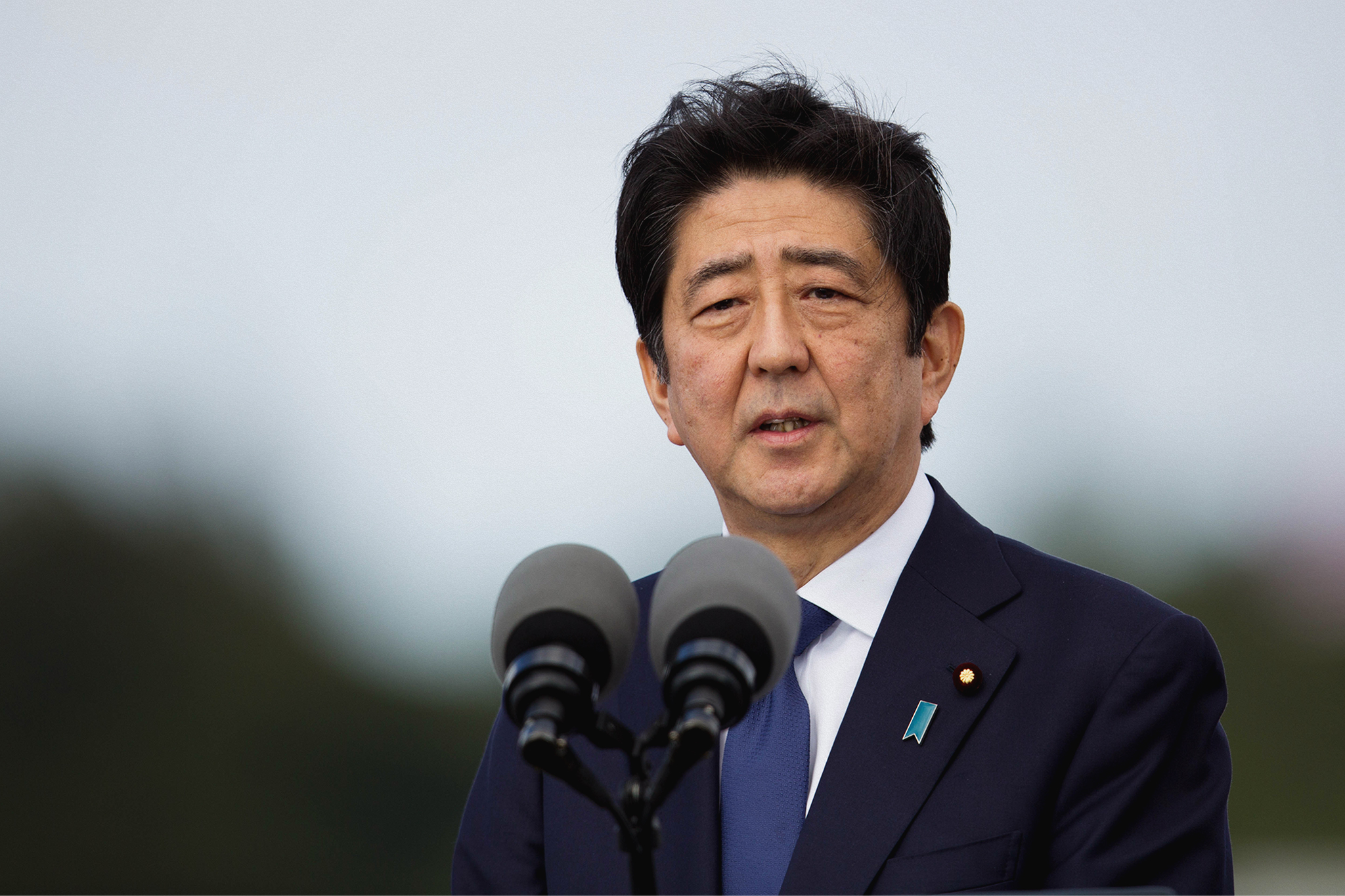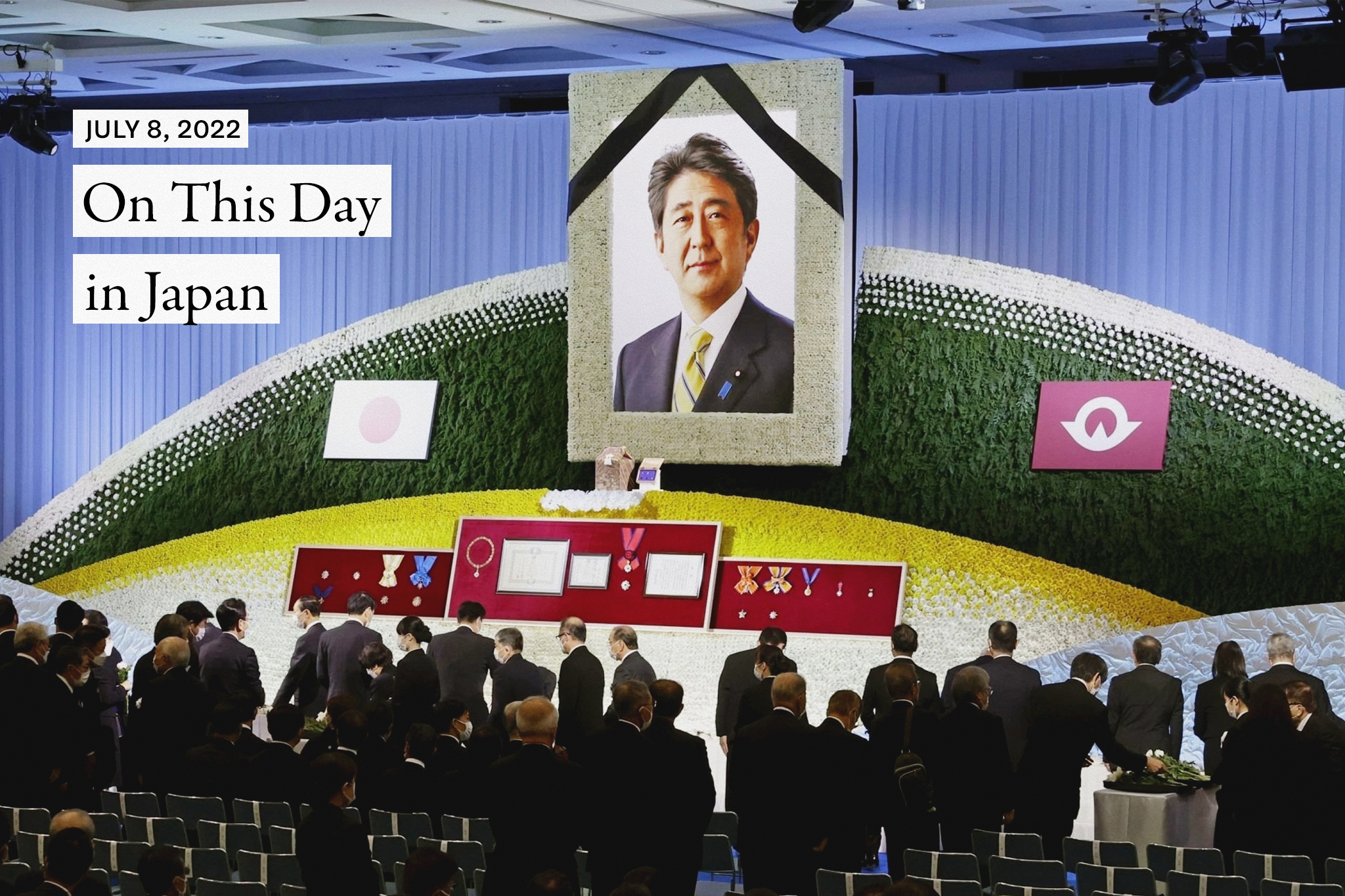It’s been 12 months since Shinzo Abe’s assassination, an incident that sent shock waves across the globe. On the morning of July 8, the former Japanese prime minister was gunned down while giving a speech in Nara Prefecture. The suspect, Tetsuya Yamagami, was quickly detained at the scene. After he was taken away, paramedics arrived to find Abe lying unconscious with blood all over his shirt. Frantically flown to Nara Medical University Hospital via helicopter, he wasn’t breathing and his heart had stopped. The ex-PM was pronounced dead at 5:03pm, five and a half hours after he’d been shot.
For our latest On This Day in Japan article, we’re looking back at Abe’s assassination and its aftermath, including the controversies surrounding his funeral and his links to the Family Federation for World Peace and Unification, widely known as the Unification Church. We’re also taking a closer look at the life and times of Yamagami. Earlier this year, the 42-year-old former Maritime Self-Defense Force (MSDF) member was indicted for murder as well as four additional counts, including violation of the arms manufacturing law and the explosives control law.
The Assassination
The former PM was supposed to be in Nagano Prefecture on that fateful day. He was scheduled to deliver a speech in support of radio personality and rookie LDP candidate Sanshiro Matsuyama for the House of Councilors election. However, a corruption scandal involving Matsuyama put a stop to that plan and instead, Abe traveled to Nara to stump for Kei Sato, an LDP councilor running for reelection. Nara Prefectural Police was informed of his visit less than 24 hours before he was due to arrive. It gave them little time to prepare. As last-minute changes go, it would prove quite a dramatic one.
Abe arrived at the site, a road junction near the north exit of Yamato-Saidaiji Station, at approximately 11:17am. Sato had begun his speech just under 10 minutes earlier. The location had been inspected by his team and the police the night before. A decent crowd attended after word had spread, mainly via Twitter, that Japan’s longest-serving prime minister would be speaking in the area. The atmosphere appeared relaxed as Abe waved to the crowd. As was usually the case at those types of events, security was light.
Abe started his speech at 11:29am. At that point, Yamagami was around 15 meters away. Just over a minute later, the suspect started moving towards Abe. Reaching into his bag, he pulled out a handmade gun. As Abe uttered the words, “Instead of thinking of reasons why he can’t…” a loud bang went off. The first shot, from around 7 meters, missed. The second, from 2 meters closer, hit the former PM in the chest and neck area. An officer tried to deflect the bullet with a briefcase but it was too late.
The Suspect
Held down by officers, Yamagami made no attempt to resist arrest. In the days that followed, media outlets scrambled to find out as much as they could about him. Former classmates described him as shy and awkward, yet also pleasant. The high school he attended is considered elite as many students there go on to further education at high-ranking universities. That wasn’t his aim, though. According to one pupil, he expressed a desire to become a firefighter. However, in his graduation yearbook he wrote that he “didn’t have a clue” what he wanted to do in the future.
Away from school, Yamagami’s life was dogged by misfortune. When he was just 4, his father died by suicide. His older brother, to whom he was close, then lost sight in one eye due to cancer at a young age. In 2015, his brother, like their father, took his own life. A source close to the family recalled a tearful Yamagami calling out to his body at the funeral. “Why did you have to die? You fool. If you’d have stayed alive, you could’ve gotten through this,” he reportedly said.
Ten years prior to his brother’s death, Yamagami attempted suicide himself. According to his uncle, he took out a life insurance policy in the hope that his siblings would benefit from his death. Speaking to reporters a week after the assassination, the relative said the Yamagami children would often ask him for food as there was nothing in their house. Finances were always tight due to the fact their mother gave the family money to the Unification Church. It’s why Yamagami stopped studying for the civil service exam and instead joined the MSDF.

The Unification Church
The Unification Church
A few hours after Abe’s assassination, a police official revealed at a press conference that the attack wasn’t politically motivated. Under questioning, Yamagami said he held a grudge against a “specific organization” that had links to the Tokyo-born politician. It soon became apparent that the organization in question was the Unification Church. A cult derived from Christianity, it was founded in 1954 by South Korean Sun Myung Moon, who considered himself the second coming of Jesus Christ. Often referred to as the “Moonies,” it’s famous for its mass weddings, known as blessing ceremonies.
According to investigative sources, Yamagami had been planning an attack against the church for around two decades. He reportedly used to walk around one of its facilities with a knife. He sought revenge after his mother, who joined the Moonies in 1991, was declared bankrupt. She reportedly donated around ¥100 million to the group, including proceeds from the sale of the family home and land. The Unification Church has since stated that there are no records of the amounts of donations she made and that ¥50 million was returned to her.
Yamagami’s one-man crusade against the organization continued. In 2019, he planned to assassinate Hak Ja Han, the Moonies leader and wife of the late founder, with a Molotov cocktail when she visited Japan. Unable to enter the venue, he decided to give up. Plans to murder her in South Korea were then wrecked by the COVID-19 pandemic. Yamagami instead switched his attention to Abe after watching a video of him paying respects to Ja Han. He believed the former PM’s grandfather, Nobusuke Kishi, who also served as prime minister, was instrumental in bringing the group to Japan.

The State Funeral
Links between the Unification Church and Japanese politicians didn’t end with Abe and his grandfather. In the weeks after the assassination, several high-profile members of parliament connected to the organization were dismissed from Prime Minister Fumio Kishida’s Cabinet, including Abe’s brother Nobuo Kishi. Support for the PM plummeted due to anger over his ruling party’s ties to the controversial church and his decision to hold a state funeral for his predecessor. Promulgated in 1926 for members of the imperial family, prime ministers and high-ranking military personnel, the state funeral ordinance was abolished after World War II.
An exception was made in 1967 for Shigeru Yoshida, who served as prime minister twice between 1946 and 1954. Having led Japan through a difficult period of postwar recovery, the decision to hold a state funeral for him wasn’t seen as quite so controversial. The one for Abe was more contentious. Not just because of the astronomical cost of the taxpayer-funded event — some unconfirmed reports suggested it was more expensive than Queen Elizabeth II’s elaborate funeral, though the final cost was said to be much lower than initial estimates — but also because the public wasn’t consulted and the man in question was such a polarizing figure.
Opinion polls showed that more than half the country was against the funeral. There were protest rallies throughout Japan and one man even set himself on fire near the PM’s Tokyo office. That was never going to stop the event going ahead, though. Held on September 27, 2022, more than 4,300 guests from 100 countries attended at the Nippon Budokan Arena. Among them were over 50 past and present world leaders, including Justin Trudeau, Narendra Modi, Anthony Albanese, Nicolas Sarkozy and Theresa May. Outside, there was a mix of mourners and protesters.

Shinzo Abe | Anthony Quintano
Abe’s Legacy
The reaction to Abe’s funeral was no surprise given the fact that he divided opinion more than any Japanese political figure in the 21st century. Some saw him as an inspirational and patriotic leader who was admired by his allies and helped put Japan back on the map as an important global player. For others, he was a right-wing nationalist who engaged in historical negationism, particularly when it came to Japanese war crimes. He was also viewed as a militarist who called for the doubling of Japan’s defense spending and pushed for revisions to the pacifist constitution.
In terms of domestic politics, he’s most remembered for “Abenomics” — his signature economic policy of large-scale monetary easing, fiscal spending and structural reforms. There were some partial successes, such as the significant rise in exports and unemployment dropping to its lowest level in decades. Those benefits, however, did not spur the public to spend as wages didn’t rise enough. After a positive start, momentum fizzled out, much like his premiership. On August 28, 2020, Abe resigned as PM, just four days after he’d broken the record for the longest uninterrupted leader in Japan’s history. He remained a powerful figure in the Liberal Democratic Party until his untimely death on this day a year ago.









